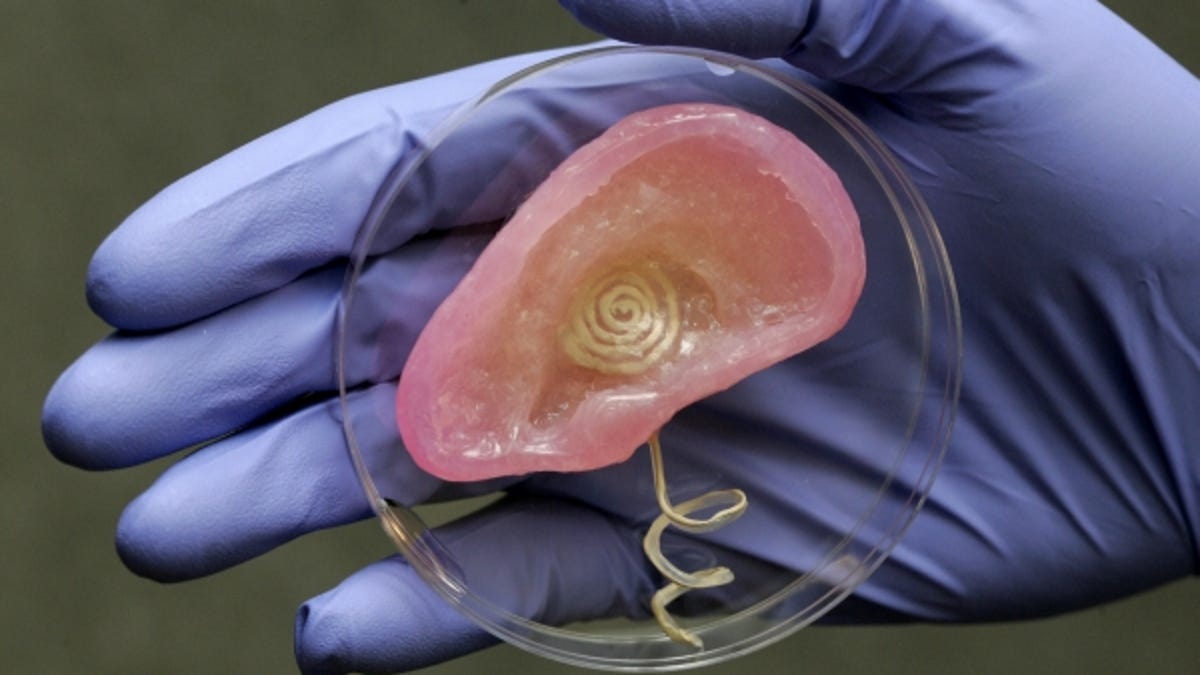Printable bionic ear sends hearing to the dogs
Scientists have created a 3D-printed cartilage ear with an antenna that extends hearing far beyond the normal human range.

(Credit: Frank Wojciechowski)
Scientists have created a 3D-printed cartilage ear with an antenna that extends hearing far beyond the normal human range.
Using off-the-shelf 3D printing tools, silver nanoparticles and cell culture, scientists at Princeton University, New Jersey, have created a functional bionic ear that can detect radio frequencies far beyond the normal human range.
Living, 3D-printed tissue has been in the news a fair bit recently — but this is the first attempt at creating a fully functional organ with embedded electronics.
"In general, there are mechanical and thermal challenges with interfacing electronic materials with biological materials," said Michael McAlpine, an assistant professor of mechanical and aerospace engineering at Princeton and the lead researcher. "Previously, researchers have suggested some strategies to tailor the electronics so that this merger is less awkward. That typically happens between a 2D sheet of electronics and a surface of the tissue. However, our work suggests a new approach — to build and grow the biology up with the electronics synergistically and in a 3D interwoven format."
To create the ear, the team used bioprinting in hydrogel, first using a computer program to break down the structure of the ear into thin slices. These slices were then printed with a 3D printer using cells from a calf, which later formed the cartilage, plastics and silver nanoparticles to create a precise model of a human ear with the antenna already embedded. Part of the challenge was merging a soft material (tissue) with a hard one (electronics), which the cartilage helped alleviate.
The ear itself consists of the cartilage structure, with a coiled antenna embedded within. Two wires can connect to a helical cochlea, which in turn can connect to electrodes — or possibly, a patient's aural nerve endings, much like a hearing aid, restoring or enhancing hearing. However, the technology would have to undergo extensive testing before it could be applied to a human patient.
"The design and implementation of bionic organs and devices that enhance human capabilities, known as cybernetics, has been an area of increasing scientific interest," the researchers wrote. "This field has the potential to generate customised replacement parts for the human body, or even create organs containing capabilities beyond what human biology ordinarily provides."
The full study, "A 3D Printed Bionic Ear", can be read in the journal Nano Letters.
Via phys.org

